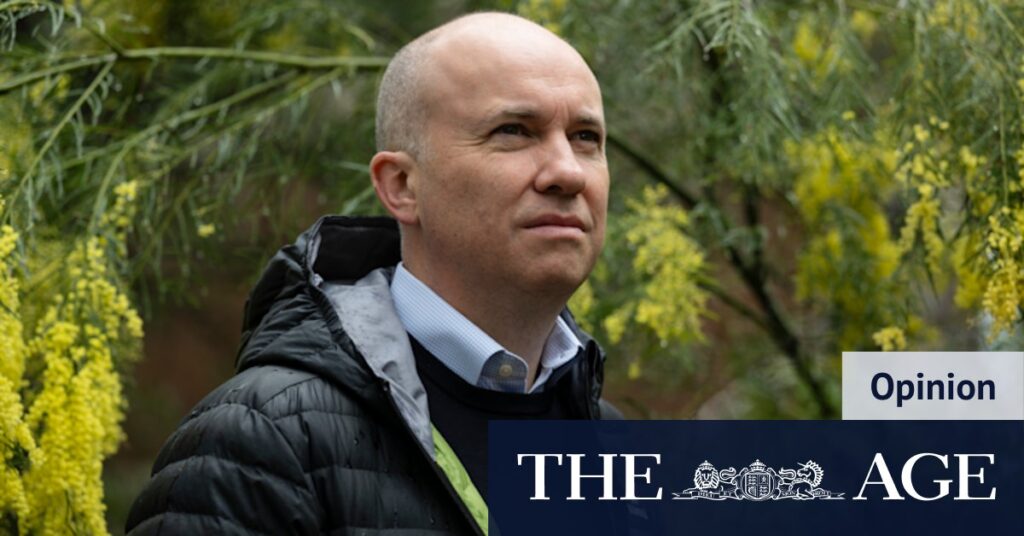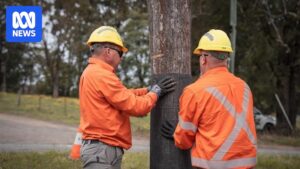
Matt Kean, a former New South Wales (NSW) treasurer, has taken on a new role as the chair of the Climate Change Authority, an independent statutory advisory body. Recently, the Albanese government adopted the Authority’s recommendations for new targets to reduce emissions by 62-70 percent by 2035, aiming for net zero by 2050.
The announcement comes as a significant step in Australia’s climate policy, with Kean, a Liberal Party member, standing alongside Labor Party figures to champion the cause. In a recent conversation, Kean shared insights into his journey and the challenges of aligning political and environmental goals.
From Liberal Roots to Climate Advocacy
Kean’s journey from a Liberal Party member to a climate change advocate is intriguing. “I have always believed in the science of climate change,” Kean explained. His commitment deepened when Gladys Berejiklian appointed him as the minister for energy and environment in 2019. The more he learned from experts in the field, the more he recognized the intertwined environmental and economic opportunities.
Kean’s personal experiences also played a role. In January 2020, during the devastating bushfires, Kean became a father. “I came out of the delivery suite… and the city was just shrouded in smoke,” he recalled. This moment reinforced his resolve to act decisively on climate issues.
Political Dynamics and Challenges
While Kean found support within the NSW Liberal Party, the federal scene was different. “Scott Morrison was lugging a lump of coal around in the parliament,” Kean noted, contrasting the federal government’s stance with NSW’s progressive approach. Despite these challenges, Kean emphasized that the Liberals demonstrated the economic viability of addressing climate change.
Kean explained the importance of the Paris Agreement, under which Australia committed to reducing greenhouse gas emissions. “Carbon dioxide is like a blanket around the earth,” he said, emphasizing the need for global cooperation to achieve net zero by 2050.
Setting Ambitious Targets
The Albanese government’s recent decision to adopt the Climate Change Authority’s recommendations marks a significant commitment. However, this decision has not been without controversy. Kean acknowledged the criticism from climate scientists who argue the targets fall short. “We are starting from a high-emitting economy,” Kean explained, highlighting the challenge of slashing per-capita emissions significantly.
“To reach our goal over the next decade would make Australia the biggest improver among the nations we have looked at.”
Despite internal political tensions, Kean remains optimistic. “The community has already decided on this issue,” he stated, pointing to the widespread adoption of renewable technologies by Australians.
The Economic Argument for Renewables
Kean firmly believes in the economic benefits of transitioning to renewable energy. “Committing to net zero is not economic suicide,” he argued, citing economic modeling that shows a net benefit from infrastructure investments and job creation.
Renewables, according to Kean, are not only environmentally imperative but also economically advantageous. “Renewables are by far the cheapest system for consumers and taxpayers,” he emphasized, citing expert analysis from the Australian Energy Market Operator and the CSIRO.
Addressing concerns about rising electricity bills, Kean pointed to global factors such as the war in Ukraine affecting energy prices. “The problem is we don’t have enough renewables in the system,” he said, advocating for a faster transition to protect against such shocks.
Looking Ahead: A Renewable Future
Kean envisions a future where Australia could become a leader in renewable energy, akin to “the Saudi Arabia of solar power.” He sees the potential for a new era of economic prosperity driven by clean technology.
Despite political opposition from some quarters, Kean remains hopeful. “The winner will probably be beyond Netflix,” he mused, alluding to future technological advances that could surpass current expectations.
As Australia moves towards its 2035 and 2050 targets, the role of bipartisan support and public engagement will be crucial. Kean’s journey from a Liberal treasurer to a climate advocate exemplifies the evolving landscape of climate politics in Australia.







